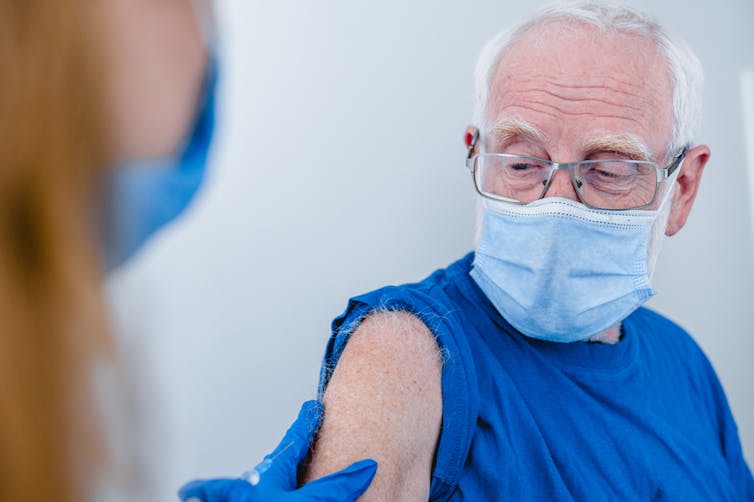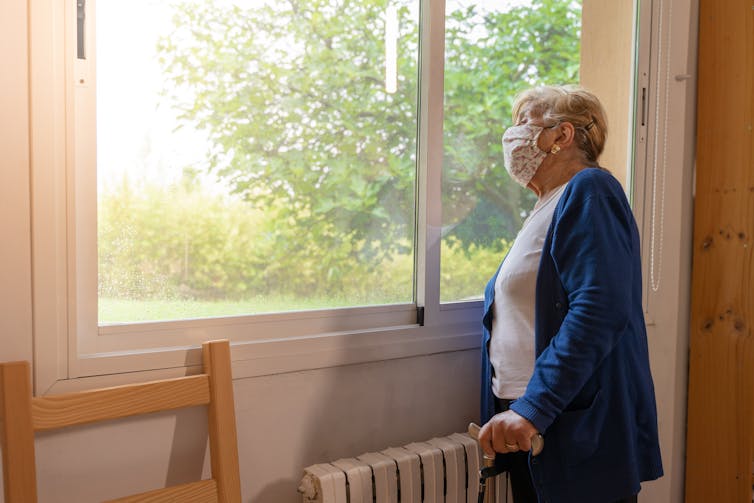

Nigel William Crawford, Murdoch Children’s Research Institute
It emerged today that two aged-care residents in Brisbane were given an incorrect dose of the Pfizer vaccine — more than the amount recommended.
The 88-year-old man and 94-year-old woman were receiving their vaccinations yesterday as part of the first phase of Australia’s vaccine rollout, which began this week.
Both residents are being monitored, but haven’t shown any signs of adverse reactions so far.
Health Minister Greg Hunt has revealed the doctor who administered the vaccines had not completed the proper training. The doctor has been stood down from his position while the error is investigated.
But how did this mistake happen, and how can we aim to minimise the risk of it happening again?
We don’t yet know exactly what happened, as the incident is still under investigation. But it’s likely the doctor gave the patients either the whole or a larger part of the multi-dose vial than indicated.
COVID vaccines come in vials containing several doses. A vial of the Pfizer vaccine contains five or potentially six doses, and health-care staff need to extract individual doses from the vial. This is different to most other vaccines, which come in single-dose vials.
Multi-dose vials are useful in a pandemic situation. They allow manufacturers to distribute more vaccine, more easily and rapidly around the world.
We’ve actually seen this kind of mistake before — we call it a multi-dose vial error. It can happen if clinicians are not careful with the extraction, or haven’t fully understood the education and training with regards to multi-dose vials.
Other countries, such as Israel and Germany, have reported these kinds of incidents during their COVID vaccine rollouts. But similarly, there haven’t been serious adverse effects reported to date for the patients involved.
We (SAEFVIC — the Victorian vaccine safety service) reported on a similar case in Melbourne with the H1N1 (swine flu) vaccine in 2010, which came in a vial containing ten doses of vaccine. A person was accidentally given the whole vial (5 millilitres, ten times the recommended 0.5ml). They were monitored and experienced a small local reaction, but no other side-effects.
Read more:
How the Pfizer COVID vaccine gets from the freezer into your arm
In the early phase 1 and 2 vaccine clinical trials, scientists test a variety of dose sizes to determine what dose delivers the best immune response, while also not using more vaccine than necessary. This helps determine what dose is then used in the phase 3 efficacy trials.
In clinical trials for BNT162b2 (Pfizer’s COVID vaccine), some participants received more than three times the dose the Therapeutic Goods Administration (TGA) has provisionally approved (30 micrograms). These participants didn’t experience adverse reactions much more so than those who received the smaller doses, apart from one participant who had local pain at the injection site.
Although you can overdose on medications, vaccines are a bit different. I often say “you can’t have too much of a good thing” when it comes to vaccines. Really large amounts might produce challenges, but we are reassured by the phase 1 and 2 clinical trial data.
Even if these aged-care residents received up to five or six times the recommended dose (if they did in fact receive a whole 1.8ml vial), this is still a relatively small amount and not likely to be harmful. Of course, it’s still important to monitor them closely.
It’s possible any local side-effects, such as pain at the injection site or fever, may be slightly heightened with a larger dose. But the information we have from clinical trials, and the reports from other countries, tells us we have no reason to be concerned about anything more serious in the short or long term.

Even if these “overdoses” are not likely to be harmful, it’s always safest to stick to the recommended dose. We don’t want to see an incident like this repeated. It may also undermine confidence in the vaccine rollout, and where COVID vaccines are a precious resource, it’s important we try not to waste a single dose.
In such a large-scale vaccine program, human errors are bound to happen occasionally. It’s very positive that a nurse reportedly stepped in on noticing this mistake, and that we’ve seen open disclosure around the incident.
Read more:
Open disclosure: why doctors should be honest about errors
The key now is what action we’re going to take to minimise the risk of this happening again.
Clinicians in Australia are not accustomed in their usual practice to delivering vaccines from multi-dose vials, meaning there’s a greater risk of error. This incident should be the impetus to make sure everyone administering vaccines has completed the required training, including the multi-dose vial component. This should be documented via their Australian Health Practitioner Regulation Agency (AHPRA) registration number (where applicable).
This event should also prompt us to look at how we capture and report these sorts of errors in Australia. The focus on vaccine safety surveillance is, for the most part, on patients who have had an adverse event following immunisation — these are summarised nationally by the TGA.
Not all vaccine errors will lead to an adverse reaction, but we need to ensure we also have a systematic way to capture any errors in administering the vaccines. The newly established Vaccine Operation Centre, a federal government initiative, is in a good place to capture and collate this information.
Read more:
How do we know the COVID vaccine won’t have long-term side-effects?
In the context of global vaccinations against COVID-19, multi-dose vials are the only way forward. The AstraZeneca vaccine will also come in multi-dose vials. So this is something we must do the best we can to get right.
Nigel William Crawford, Associate Professor, Murdoch Children’s Research Institute
This article is republished from The Conversation under a Creative Commons license. Read the original article.